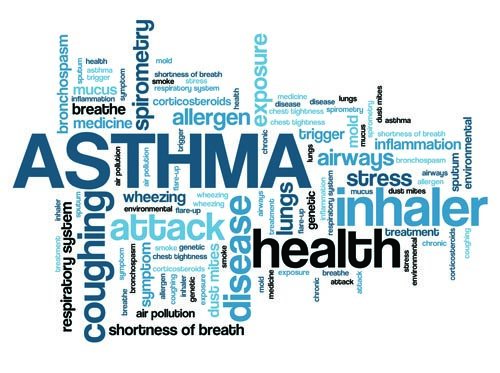Know the facts: Occupational asthma

Occupational asthma can develop when a worker breathes in gases, chemical fumes, dust or other work-related substances. According to Mayo Clinic, it also can result from exposure to a substance a worker is sensitive to, triggering an allergic or immunological response.
The clinic lists more than 250 substances as possible causes of occupational asthma. These include:
- Metals, especially platinum, chromium and nickel sulfate.
- Chemicals used to make paints, varnishes, adhesives and laminates.
- Respiratory irritants, such as chlorine gas, sulfur dioxide and smoke.
“If it’s not correctly diagnosed and you are not protected or able to avoid exposure, occupational asthma can cause permanent lung damage, disability or death,” Mayo Clinic cautions.
Signs and symptoms
Symptoms of occupational asthma are similar to other types of the condition, and may include wheezing, coughing, shortness of breath and chest pain, as well as a runny nose or eye irritation. However, because occupational asthma depends on which substances you’re exposed to and how long you’re exposed, symptoms may get worse as the workweek progresses. In addition, you may notice that symptoms go away on weekends or vacations, but come back when you return to work. Symptoms also may continue after exposure has stopped.
People who already have allergies or asthma are at an increased risk of developing occupational asthma, as well as anyone who has a family history of allergies or asthma. Smoking increases your risk of developing asthma if you’re exposed to certain kinds of irritants, as well.
Prevention
“The best way to prevent occupational asthma is for workplaces to control the workers’ level of exposure to chemicals and other substances that may be sensitizers or irritants,” the clinic states. These measures can include implementing advanced control measures to prevent exposures, using less harmful substances and providing personal protective equipment to workers. Employers should inform workers that they may be exposed to hazardous chemicals and instruct them on how to safely handle them.
Advice for workers: If you smoke, try to quit. Also, avoid taking aspirin, ibuprofen and other nonsteroidal anti-inflammatory drugs (known as NSAIDs), as these medications can worsen asthma symptoms.
If you’re overweight, losing weight can help reduce asthma symptoms and improve lung function.
Post a comment to this article
Safety+Health welcomes comments that promote respectful dialogue. Please stay on topic. Comments that contain personal attacks, profanity or abusive language – or those aggressively promoting products or services – will be removed. We reserve the right to determine which comments violate our comment policy. (Anonymous comments are welcome; merely skip the “name” field in the comment box. An email address is required but will not be included with your comment.)

